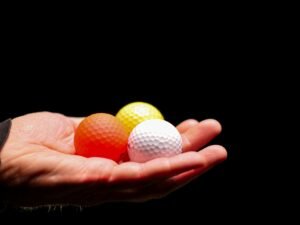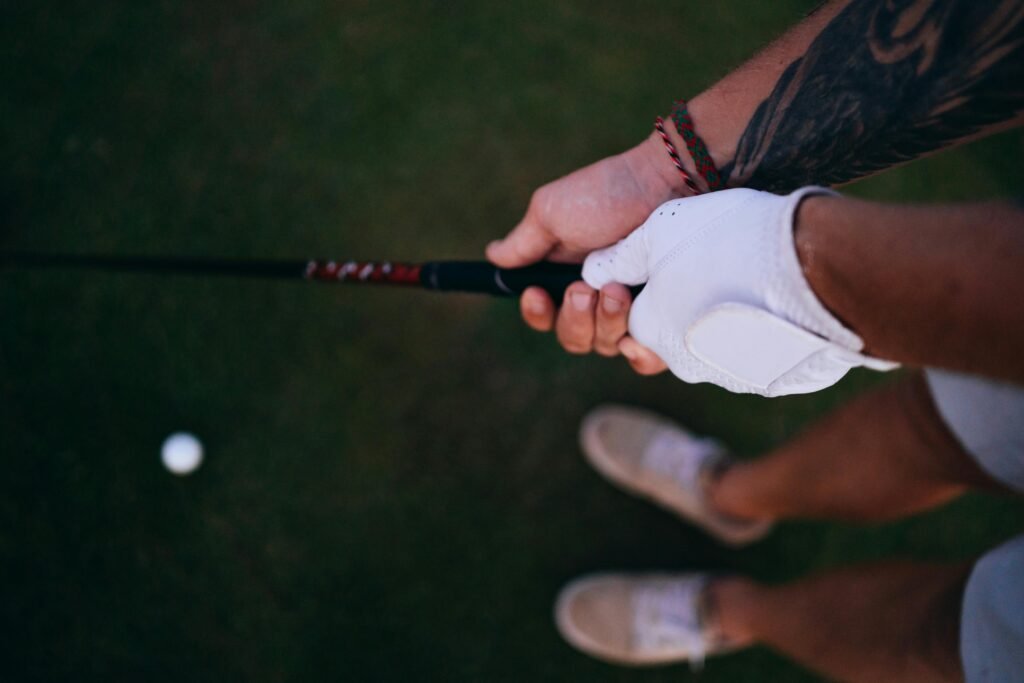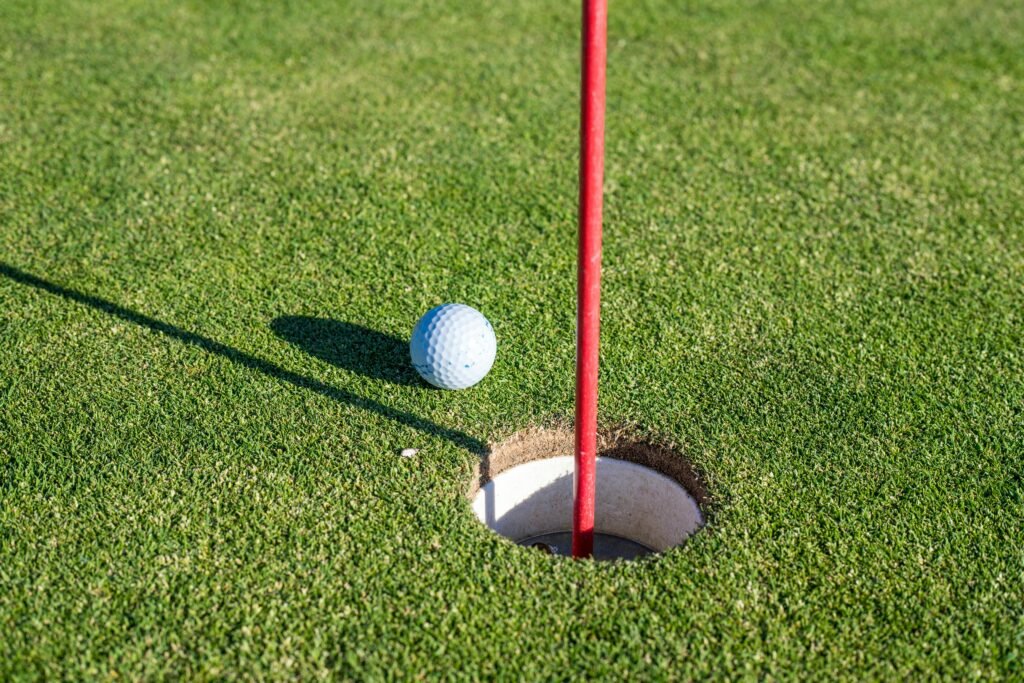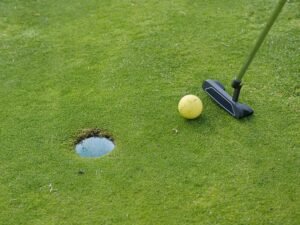
I hope you enjoy reading this blog post.
If you are looking professional golf manufacturer.
Holes And Strokes In Golf: Differences, Scores And Skills
March 27, 2025
In the world of golf, hole play and stroke play are the two most common and important forms of play.
Although they all play on the greens of the golf course, everything from the rules of the game to the use of strategy. From scoring methods to penalty rules, there are many differences.
At the same time, the way of calculating the total score in the golf competition and the unique skills are also worth every golf lover’s in-depth understanding. Now, let’s take a closer look at the rules of the game.
The Rules Of The Game

Service Rule
On each hole in the game, the winner of the previous hole will be given priority. If the previous hole is a tie, the player in the order of the previous hole continues to serve first.
The serve must take place inside the service zone once the player’s ball is located outside the service zone. The opponent has the right to ask him to return the ball in the service area without penalty.
Batting Rules
When a player hits the ball, he must hit the ball with the club in one shot and hit it out. If the club accidentally touches the ball several times during the stroke, only one stroke is counted, but the opponent must be informed.
If the ball rests on the edge of the hole after a player hits the ball, without the player or his caddie touching the ball or the surface of the hole. If the ball falls into the hole within 10 seconds, it is considered a valid shot and the hole score is valid.
Hole Call
On each hole, the player with the fewest strokes wins the hole. If both players have the same number of strokes on a hole, the hole is a tie, or “halve”.
When the number of holes one side leads exceeds the number of unplayed holes, the match ends early and the leader wins. If, after playing all the required holes, the number of holes in the lead is the same, an extended match will be played until the winner is determined.
Extension matches usually start on the first hole and are played in sequence until one side wins on a particular hole.
Special Case Rule
If a player’s ball is lost or out of bounds, he or she is required to hit the ball again after a penalty of one stroke from the original point of play, which may result in a disadvantageous situation on the hole.
If the ball hits a soft spot on the ground, it is on the fairway. Players can pick up the ball, wipe it as close to the hole as possible, and throw it without penalty. But this rule may not apply in some areas, such as long grass areas.
When looking for the ball, if the ball is not found for more than 5 minutes. The opponent may choose to allow the player to continue the game after taking a penalty. Or simply decide that the hole is won by the opponent.
In addition, if a player uses a club that is not allowed during the game or violates the AIDS rule. The opponent has the right to ask the player to cancel the shot. Re-hit and take a penalty shot, or simply give the hole to your opponent.
The Difference Between A Hole Game And A Stroke Game

Goal Of The Competition
Each hole is an independent competitive unit, and the player’s goal is to beat his opponent on each hole. The victory of every hole is crucial, and the victory or loss of one hole may directly affect the direction of the entire competition.
For example, in an 18-hole match, Player A plays the par 4 on the first hole and Player B plays the par 5. Then Player A wins the first hole and has a 1-hole lead during the course of the match.
Par, on the other hand, is concerned with the total number of strokes played throughout the tournament. Players seek to complete the fewest total strokes on all holes in a given round or rounds.
For example, in a 72-hole par play, players need to play over four days. Keep playing steadily and minimize the number of strokes on each hole to lower the total number of strokes and thus get a better ranking.
Scoring Formula
The scoring is straightforward and simple. At the end of each hole, the team with the lowest number of strokes wins the hole and is credited with a 1 hole lead. If both players have the same number of strokes, the hole is a tie and is called “halve”.
At the end of the match, the number of holes won by both sides is counted, and the one who has won the most holes wins. If both players win the same number of holes after 18 holes, an extended round may be played to determine the winner.
In contrast, stroke play is the accumulation of the number of strokes a player has made on each hole. After completing all required holes. The total number of hits is the number of points scored by a player, and the fewer hits, the higher the ranking.
For example, a player plays a par 4, a par 3, a par 5 on 18 holes… Add these strokes together and the resulting sum is the player’s total score.
Strategy Of Game
Compared to the hole game, the players’ strategies are more flexible and targeted. Because each hole is relatively independent. Players can adjust their hitting strategy at any time according to the performance of their opponents and the characteristics of the hole.
For example, when facing a stronger opponent, a player may take a conservative approach on some of the more difficult holes, just trying to stay even and avoid losing. When the hole they are good at or the opponent is not in good condition, they will choose radical strategies to win the hole.
On a long, par-three hole, a bad tee shot landed in a greenside bunker. You can choose to play it safe, get the ball safely on the green, and try to win the hole with a par.
Stroke play is more about stability and consistency. Players need to maintain a stable mentality and technical performance throughout the game to avoid big mistakes. When choosing a batting strategy, safety and accuracy are often prioritized over taking risks in pursuit of long distance or difficult shots.
For example, in situations where the fairway is narrow and flanked by trees, players will choose to hit the ball safely into the middle of the fairway with irons. Rather than risk using the wood to pursue a longer distance, lest the ball hit the trees causing a penalty shot.
Penalty Variance
In match play, a player who breaks the rules will usually lose the hole. For example, if a player accidentally improves his game environment. For example, by moving a stone or branch around the ball, he will lose the hole directly in the game.
In stroke play, the violation is usually a penalty. Common penalty situations include the ball going out of bounds, losing the ball, and hitting the ball in a prohibited area.
A ball out of bounds or missed is usually a one-stroke penalty. The player must hit the ball again at the original hit point or the designated complement point and accumulate the penalty points. It’s a 2-stroke penalty to hit a ball in a no-play area.
How The Total Score Of The Stroke Competition Is Calculated

Cumulative Number Of Regular Strokes
From the tee, each stroke counts as one stroke until the ball is hit into the hole. The number of strokes a player has hit on all holes over the course of the tournament is added up to the player’s original total score.
For example, in an 18-hole par-play tournament, players use a 4 on the first hole, a 3 on the second hole, and a 5 on the third hole… And so on. The total number of strokes in the 18 holes is added up to the player’s preliminary score for the match.
Penalty Credit
During the course of the game, if a player violates the rules of golf, he will be penalized according to the specific circumstances. These penalties must count towards the player’s total score.
If a player’s ball goes out of bounds, he or she must re-play the ball at the point closest to the foul ball. Instead of being closer to the hole, add a stroke penalty, which will count towards the total score.
If a player loses the ball, he or she must return to the position from which he or she struck the ball, with an additional 1 stroke penalty. Then re-hit the ball, which will also be added to the total score.
Handicap Adjustment
In amateur golf, in order to make the game more fair between players of different levels. The overall score is usually adjusted according to the handicap of the competitor.
Handicap is a number used to measure a golfer’s potential playing ability. It reflects the difference between a player and a zero-handicap player (a high-level player). The higher the handicap, the lower the level of the player.
Under normal circumstances, follow the handicap calculation method specified in the competition. Subtract the corresponding handicap value from the player’s original total. An adjusted total score is obtained to determine the final ranking.
For example, a player with an original total of 90 has a handicap of 10. The tournament allows the entire handicap to be used to adjust the total, so his adjusted total is 80.
Stroke Play Skills

Kickoff Technique
The tee shot is an important starting point for stroke play. First of all, according to the hole distance, fairway conditions and their own ability to choose the right tee.
For long holes, you can generally choose the first wood with a long tee distance to try to drive the ball close to the green. If the fairway is narrow or there are many obstacles, you can choose a fairway wood or club with higher accuracy. To ensure that the ball lands in the ideal fairway position, creating favorable conditions for the next shot.
Secondly, pay attention to position and posture. Keep your feet shoulder-width apart or slightly wider and your weight evenly distributed. Bend your knees slightly, bend your spine naturally, and look straight above the ball. This position and posture can ensure the stability and balance of the body when hitting the ball, and lay the foundation for a smooth swing.
Finally, control the direction of the kick off. Before teeing off, carefully observe the fairway trend, wind direction and obstacle distribution to determine the direction of the shot.
Refer to specific target points on the fairway. Such as the middle of the fairway mark, the edge of the distant bunker, etc. Let the ball fly in the direction of the target, avoid driving the ball into more obstacles or difficult areas.
Fairway Driving Skills
When hitting the ball in the fairway, accurate distance calculation is crucial. Before hitting the ball, determine exactly how far the ball is from the hole. Choose the right club according to the characteristics of the hitting distance of the current club.
At the same time, it is necessary to consider the influence of wind direction, slope and other factors on the striking distance. More accurate distance information can be obtained with tools such as rangefinders to ensure the accuracy of the shot.
For example, in the case of downwind, the stroke distance will be relatively increased, and the club can be appropriately reduced by one. In the upwind or uphill, the stroke distance will be shortened, and you need to choose a club that can increase the distance.
In addition, we need to hit a controlled trajectory. Adjust the trajectory of the shot according to the fairway condition and the conditions around the green. If there is an obstacle in front of the green, such as a bunker. You can choose to play a low track shot, allowing the ball to roll some distance on the green and then stop near the hole.
If there is room behind the green and the flagstick is behind the green, try to hit a high-trajectory ball. This makes the ball softer on the green and reduces the rolling distance.
Finally, maintain rhythm and flow. When hitting the ball in the fairway, maintain a steady rhythm and smooth swing. Don’t disrupt your rhythm by rushing for distance. A steady rhythm helps improve the accuracy and consistency of your shots. Make the ball fly more accurately in the direction of the target.
Mental Adjustment Skills
Stroke competition is a dual test of players’ psychology and technique, and psychological adjustment skills are equally important. Stay focused and calm.
During the game, focus on each shot and eliminate external distractions and distractions. Don’t let your emotions be affected by a mistake in the last shot or the performance of other players, keep a calm mind and play at your own pace and strategy. Use positive self-talk to boost your confidence.
Before you hit the ball, tell yourself, “I can play this shot,” “I have the ability to finish this hole,” etc. Avoid negative thoughts from entering your mind and face every challenge with a positive attitude. Learn to cope with stress.
As the game goes on, there can be all kinds of pressure. Like the pressure to keep the points when you’re ahead, the pressure to catch up when you’re behind.
To learn to cope with these pressures properly, you can ease your tension by taking deep breaths and adjusting your position. Turn pressure into motivation and stay in good shape.
The holes and strokes of golf have their own characteristics. Learn the difference between them and the scoring methods and techniques of the strokes. It allows players to better play their level in different forms of competition and enjoy the fun and challenges brought by golf.
Whether it’s the pursuit of winning every hole, or working to lower the total number of strokes. The charm of golf lies in constantly challenging oneself and pursuing excellence within the framework of rules.
FAQS
How do I choose the right golf ball for my skill layer?
Beginners should start with two-layer balls for ease of use and affordability. Intermediate players might benefit from three-layer balls for better control.
Advanced players can explore four or five-layer options to enhance their performance.
Are more layers always better?
Not necessarily. While more layers can offer advanced performance features, they may not be suitable for every player.
Beginners might find multi-layer balls harder to control, while more experienced golfers can benefit from the added complexity.
What is Fuli lead time?
Usually, we ship orders in 2 weeks. But it will take a little longer if we have the heavy burden of production tasks. It also takes more time for customized products.
Can the weather affect the choice of golf ball?
Absolutely. In colder weather, a softer ball might provide better feel, while in warmer conditions, a firmer ball might maintain distance better.
Additionally, wet conditions may call for balls that offer better traction and control.
How often should I change my golf balls?
Golf balls should be replaced if they show visible signs of damage (scrapes, cuts) or if you notice a decline in performance.
Regular players may want to change balls every few rounds, while casual players can go longer.
Leave a Reply
Your email address will not be published. Required fields are marked *

Are you looking for
GOLF BALL?
Offers Suitable Golf For Wholesalers And Professionals















